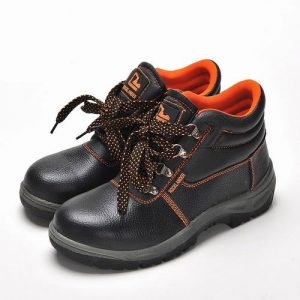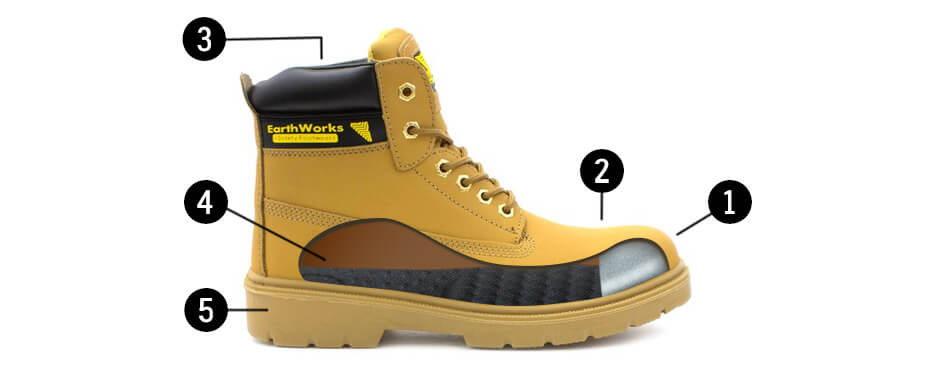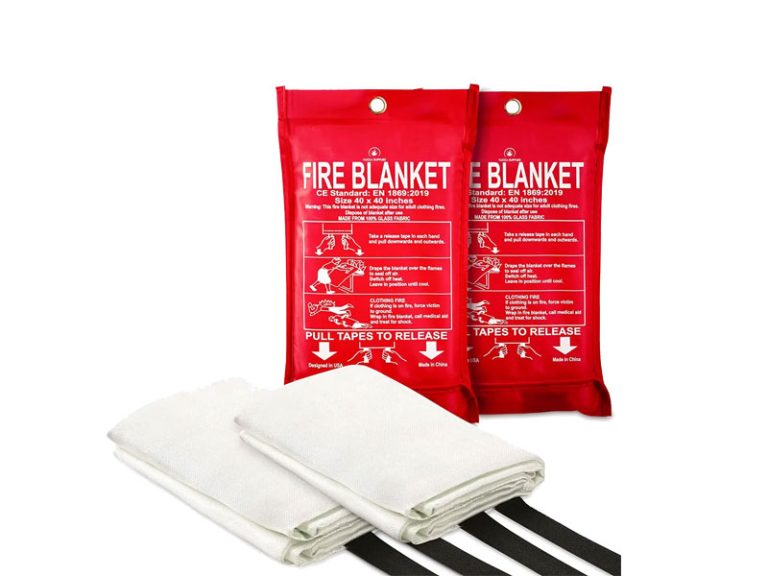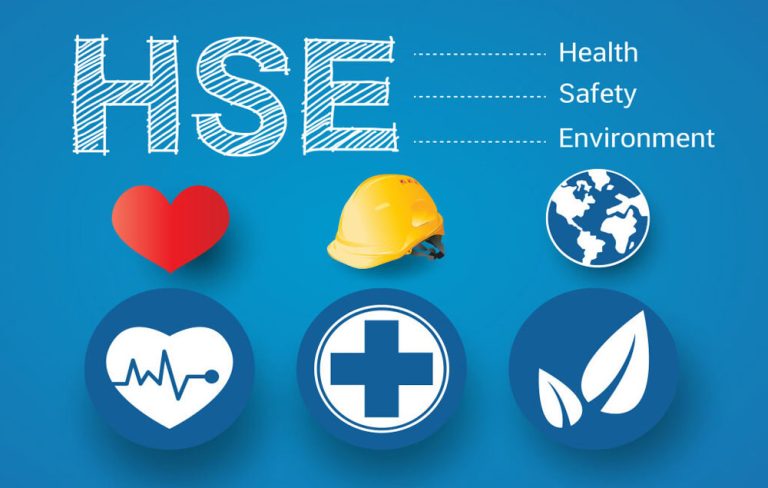Do you know about safety shoes? You want to get more protection at work, but you don’t know what to look out for. Below we will detail the definition, history, materials, and uses of safety shoes.
Table of Contents
What is the definition of safety shoes?
Safety shoes are a type of footwear that is designed to protect your feet from potential hazards. They typically have a steel toe cap, which helps to protect your toes from being crushed or injured. Safety shoes can also provide foot protection from other dangers such as sharp objects or chemicals.
Safety shoes should be worn by workers who spend a lot of time standing and walking on hard surfaces. The protective toe cap prevents foot injuries from heavy tools or construction equipment falling on the feet. These shoes also protect the worker from puncture wounds and other injuries caused by sharp objects.
In addition to protecting the worker from injury at the workplace, safety shoes also offer comfort to the wearer by providing features such as shock absorption and cushioning in high-impact areas like the heel and ball of the foot. However, they must be comfortable enough to allow you to move around freely without causing fatigue or soreness.
Safety shoes should be worn in conjunction with other personal protective equipment (PPE) such as hard hats and eyewear because they are designed to provide protection against specific hazards, but not all hazards present in an industrial environment. Safety shoes can only protect you if they’re properly fitted for your feet; otherwise they won’t do any good.
One professional safety shoes company that produce different type of safety shoes and work boots in China.

What is the history of safety shoes?
Industrial manufacturing brought with it the need for protective footwear. During the 18th and 19th centuries, when industrialization revved up, there was a great need for sturdy, durable shoes. People who worked in quarries and mines were especially vulnerable to foot injuries, so they started wearing heavy boots made of leather and steel.
In the 20th century, as materials such as alloys became available, manufacturers began using them in their boot designs. And as technology advanced and different types of machinery were invented, safety footwear evolved to meet the specific needs of certain industries.
Today, safety shoes are made of a variety of new materials and are designed to keep workers safe in nearly every type of hazardous environment. However, regardless of how the shoes have changed over time, the goal has remained the same: to protect workers’ feet from injury by keeping them comfortable and supported through long shifts on their feet.
A safety shoe is a type of footwear that can protect the wearer’s feet against a specific hazard. Safety shoes are typically used in industries such as heavy manufacturing, mining, and oil & gas exploration. Such footwear can be made from various materials, including leather, rubber, metal, or plastic.
The safety features of the shoe are determined by the selection of materials and types of construction. Common features include steel toecaps (also known as steel toes), heat-resistant soles or coating around the instep to provide protection against molten metal. There are also safety shoes with safety toes made of lightweight plastics like polycarbonate and thermoplastic polyurethane.
Safety Shoe Structure
1. Toe Cap – The toe cap is the most important part of a safety boot. It should be reinforced to protect your toes in the event of a heavy object falling on them. Even though they’re often referred to as having steel toe caps, this isn’t necessarily the case. Sometimes the reinforced toe cap in safety boots and shoes can be made from composite materials, plastic such as TPU (thermoplastic polyurethane) or even aluminium.
As all safety boots are made for different uses, the minimum requirements from a toe cap vary from boot to boot. Regardless of this and the materials that they’re made from, any protective toe cap should withstand a minimum of 100 joules in a drop test.
2. Upper – The uppers of safety footwear will be made from a single material or a combination of materials. Most safety footwear will have smooth or nubuck leather uppers as opposed to manmade materials. Some safety shoes are also made with textile or synthetic uppers such as micro-velour, these are quite significantly more breathable so work well in hot conditions, however leather is a much more stable material so offers greater protection against the elements and hazards. Excessive heat can also affect the strength of manmade materials, causing them to stretch which may compromise the structural integrity of the shoe, whereas leather will hold its shape. In addition, leather uppers require little maintenance, just regular cleaning and polishing will keep them in good condition.
 3. Lining – A good lining is one of the most important components of a safety boot. As the lining is in direct contact with the foot, it’s important it is made from a material that allows breathability, absorbs moisture and dries quickly. Most linings in safety boots are made from materials such as cotton, wool or leather or thermoregulating textile composites as all of these have those qualities. Genuine leather is a natural product, which is durable and resilient. It repels water, is breathable and softens over time as it moulds to the shape of the foot. Wool on the other hand keeps you warm when it’s cold and cool when it’s warm – it also absorbs moisture and dries quickly. Modern synthetic materials such as microfibers are lightweight and breathable – they are also easy to clean and maintain.
3. Lining – A good lining is one of the most important components of a safety boot. As the lining is in direct contact with the foot, it’s important it is made from a material that allows breathability, absorbs moisture and dries quickly. Most linings in safety boots are made from materials such as cotton, wool or leather or thermoregulating textile composites as all of these have those qualities. Genuine leather is a natural product, which is durable and resilient. It repels water, is breathable and softens over time as it moulds to the shape of the foot. Wool on the other hand keeps you warm when it’s cold and cool when it’s warm – it also absorbs moisture and dries quickly. Modern synthetic materials such as microfibers are lightweight and breathable – they are also easy to clean and maintain.
4. Insoles – The insole is designed to offer protection for the feet as well as comfort, with that in mind, most insoles in safety shoes are made from leather or a non-woven material such as wool. These materials are durable, absorb moisture efficiently and dry quickly, making them ideal for insoles. The upper part of the shoe is also made from leather and is stitched together using Kevlar strands to make it more durable.
5. Outsoles – The outsoles on safety boots are most commonly made from polyurethane, TPU or rubber. All of these materials have different characteristics, so it’s important to consider this when choosing the right safety footwear for you. For example, rubber is best for cold environments and has great slip resistance but can be vulnerable to cuts and abrasions, whereas polyurethane is better for warmer weather and is resistant to cuts and abrasions but not as flexible as rubber.
Some safety shoes may also have additional padding for support, heel caps and scuff caps. Whilst not present in every case, they should definitely be considered, especially if you use your feet to operate heavy machinery.
What are safety shoes used for?
Safety shoes are designed to protect feet from falling or rolling objects; sharp objects; hot surfaces; electrical hazards; slippery surfaces; static electricity; chemical spills; punctures; extreme cold and heat; and other workplace dangers.
Safety toe shoes will have some or all of the following protective features: steel toe cap, steel midsole, penetration-resistant sole, water resistance, slip resistance, heat resistance, antistatic properties, electrical hazard protection. The feature(s) your safety shoe has will depend on the type of work you do and the potential hazards present in your workplace.
How to make safety shoes?
Safety shoes are a type of safety footwear worn to prevent injury from a variety of hazards. From the dangers of fire, chemicals, and moving machinery to the risk of being struck by falling objects or bumping into something sharp, safety shoes can help keep your feet safe. Making your own pair offers the advantage of customizing them according to your needs and preferences.
Step 1
Measure the length and width of your feet on paper, using a ruler or measuring tape. Also measure the distance between your big toe and heel, as well as around the widest part of your foot.
Step 2
Mark out a pattern for the sole on cardboard or strong craft paper. It should be symmetrical and fit withing the measurements you took earlier. Use scissors to cut it out.
Step 3
Place the sole pattern on canvas or other sturdy fabric and trace around it with chalk, leaving at least several inches extra around it for sewing later on. Cut out two pieces of fabric using this template.
Step 4
Cut out another piece of fabric in a similar shape that will form the top part of your shoe, which should run from just behind your toes to several inches above the heel. This will form the sides and back of the shoe as well as its toe cap.
Where to buy safety shoes?
Are you looking for safety shoes?There are many places where you can buy safety shoes, but it can be difficult to know where to start.
One option is to buy safety shoes from Amazon. Amazon is a large online retailer that sells a variety of products, including safety shoes. You can usually find a wide selection of safety shoes on Amazon, and you can often find good deals on safety shoes on Amazon.
Another option is to buy safety shoes from Alibaba. Alibaba is a large online marketplace that sells a variety of products, including safety shoes. You can often find good deals on safety shoes on Alibaba, and you can also find a wide selection of safety shoes on Alibaba.
Another option is to buy safety shoes from Google. Google is a large online search engine that can help you find a variety of websites that sell safety shoes. You can often find good deals on safety shoes on Google, and you can also find a wide selection of safety shoes on Google.
When you are looking for safety shoes, it is important to compare prices and selection between different retailers. You can also read customer reviews to help you find the best safety shoes for your needs.
Additional Resources
- What are safety shoes?
- What is steel toe cap?
- What is composite toe?
- Composite toe vs Steel toe vs Alloy toe
- Steel toe vs Aluminum toe vs Carbon toe
- CE EN20345: Safety shoes standard
- What is the function of safety shoes?
- Top brands of safety shoes
- Safety shoes size chart
- Best safety shoes for construction
Conclusion
Wearing protective footwear at work is commonplace these days for health and safety reasons, but choosing the right safety footwear is also extremely important if you are to get the right level of protection. We hope that our article will help you to choose the right safety shoes for you to avoid serious injury to your feet.







